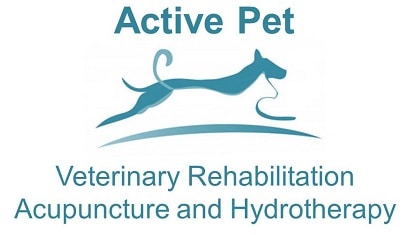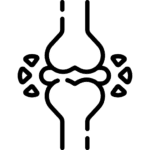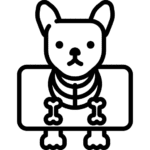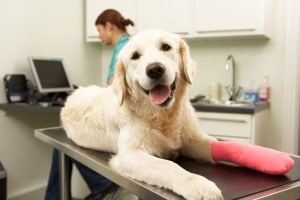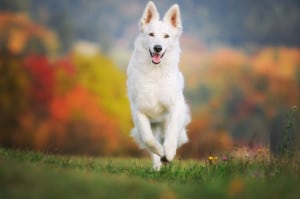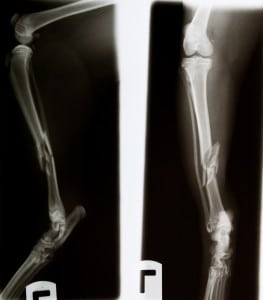 Orthopaedic disorders in dogs, cats, rabbits and small animals are common in veterinary medicine and cover a wide range of conditions. Like people, dogs, cats and rabbits can suffer from osteoarthritis, but also from other bone, soft tissue and muscular disorders. When your pet has an orthopaedic condition, veterinary rehabilitation can help to prevent pain, decrease swelling, increase movement and muscle mass and prevent further injury. We will work with you and your pet to devise an individual program tailored to their specific condition and needs to ensure they recover as quickly as possible.
Orthopaedic disorders in dogs, cats, rabbits and small animals are common in veterinary medicine and cover a wide range of conditions. Like people, dogs, cats and rabbits can suffer from osteoarthritis, but also from other bone, soft tissue and muscular disorders. When your pet has an orthopaedic condition, veterinary rehabilitation can help to prevent pain, decrease swelling, increase movement and muscle mass and prevent further injury. We will work with you and your pet to devise an individual program tailored to their specific condition and needs to ensure they recover as quickly as possible.
Fractures
Fractures in dogs and cats are common after trauma or car accident. When your dog or cat has a broken leg, pelvis or back we will select an appropriate treatment plan depending on the type of fracture and method of surgical repair that they have had. A dog or cat with a fracture involving lots of fragments of bone (highly comminuted) must have gentle rehabilitation to allow plenty of time for the bone to heal, while a pet who has a simple two-piece fracture can progress quicker.
Luxations (Joint dislocations)
Luxation injuries in dogs and cats can occur as an inherited condition or due to a traumatic incident. The most common joints to suffer dislocations due to injury are the hip, elbow and shoulder and immobilisation for several weeks, often after surgery, is needed to treat these conditions. Immobilisation for such lengthy periods can cause muscle weakness and considerable stiffness, especially as the joint begins to be used again. Careful rehabilitation is needed to prevent the joint from dislocating again while the area is healing. Canine and feline luxating patella or kneecap can be seen due to trauma but also more commonly an inherited condition and is more commonly seen in Abyssinian and Devon Rex cats and small breed dogs indicating that there is likely a strong heritable component to the disease. Depending on the severity of the patella luxation, surgery may be required – but often it can be managed by rehabilitation alone.
Tendon and ligament injuries in dog and cats that we frequently see for veterinary rehabilitation include: contracture of the flexor tendons of the front leg; insertion tendinopathies such as of the biceps tendon; and traumatic injuries such as rupture of the flexor or achilles tendon and hyperextension of the carpus. When your dog or cat has a tendon or ligament problem we will implement a rehabilitation plan for them that will give time for the tissues to heal, treat any pain and prevent re injury.
One of the most common ligament injuries we see in veterinary medicine is cranial cruciate rupture and it can occur in both dogs and cats. Cranial cruciate ligament failure can be treated using a wide range of techniques, including TPLO (tibial plateau levelling osteotomy), TTA (tibial tuberosity advancement) and lateral suture stabilisation. Several studies have shown that dogs who have veterinary rehabilitation after surgery for cruciate failure do much better than those who are treated with surgery alone. In some cases where the meniscus (shock absorbing cartilage in the knee) is intact and your dog or cat is not a candidate for surgery it may be possible to treat their cranial cruciate ligament injury with rehabilitation alone.
Click on the video below to find out about cruciate ligament rupture
Developmental conditions
When your dog or cat has a developmental orthopaedic problem such as OCD (osteochondrosis dissecans), elbow or hip dysplasia then we will arrange a rehabilitation program adapted to their specific needs. Canine OCD is most commonly seen in young, rapidly growing dogs and they often require surgery to remove detached areas of cartilage in the joints of the shoulder, stifle (knee), tarsus (ankle) and elbow. Where OCD occurs in the elbow it is often termed elbow dysplasia. It occurs when abnormal development of the elbow joint causes damage to the cartilage (OCD) and can progress to canine osteoarthritis, sometimes at a very early age. Canine and feline hip dysplasia seems to be more prevalent in certain breeds. In cats hip dysplasia is more commonly seen in the Maine Coon, Persian and Himalyan breeds, whilst in dogs it tends to be the larger breeds such as the Labrador, Golden Retriever, German Shepherd and Bernese Mountain Dog who suffer from the condition. When your dog or cat has been diagnosed with a developmental orthopaedic condition it is important to try to prevent any further deterioration and slow the progression to osteoarthritis that inevitably occurs. We will work with you and your pet to provide an optimal plan to keep them fit and healthy and to delay the onset of secondary symptoms as much as possible.
Joint replacement
It is now possible to replace damaged or worn out joints such as the hip, elbow and stifle (knee) in dogs. When your dog has a joint replacement then rehabilitation after surgery helps to decrease pain, swelling and prevent muscle atrophy. Very gentle veterinary rehabilitation is needed after joint replacement as doing too much too soon can lead to implant failure.
Spondylosis
Spondylosis deformans causes bony bridge formation between the vertebrae of the back and is seen in both dogs and cats. It can be quite painful while it occurs and the bridge between the vertebrae may take several years to form. Once the bridge has formed then it results in a reduction of flexibility at that area but usually also a decrease in pain. Spondyloarthritis is painful for dogs and cats and can be difficult to diagnose. When your dog or cat has either spondylosis or spondylitis then we can use different methods to treat both the site of the problem and also any secondary areas that have become weak or sore.
At Active Pet we look at the whole of your pet and work out an individual plan for them taking into account any areas of secondary pain, their previous level of activity and any other conditions that they have. We encourage you to get involved with your pet’s rehabilitation and we will give you a home exercise program (see below) for them and suggest ways that you can make it easier for them to get about. We will work with you to make sure that we achieve the best outcome possible so you get back your happy, active, dog, cat or rabbit.
Example of a home exercise plan for conservative management of cruciate ligament deficiency
Phase 1: Prevent further injury (Weeks 1-4)
- Increase range of motion of the joint – passive range of motion exercises (PROM) flexion and extension of the stifle, hindlimb stretches, practice sitting square.
- Increase muscle function – active sitting down onto a stool, active range of motion (AROM) , lead walks for 5 minutes for toilet trips, weight shifting and balance exercises.
- Decrease pain and swelling of the stifle joint – icing, massage, AROM, PROM.
- Gait training – walking very slowly, over different surfaces.
Phase 2: Early Strength Training (Weeks 5-8)
- Full range of motion – PROM exercises as above and add in toe-touch hanging or extension on stairs/raised platform.
- Gait training – walking with a ‘disturbance’ on the unaffected foot, walking up hills, over obstacles.
- Increase muscle control and strength – 3-legged stands, side stepping, walking backwards, hill walking, walking up steps.
Phase 3: Intense Strength Training (Weeks 9-12)
- Increase strength and motor control – exercises as above and add weight on affected limb, trotting up/down hills, controlled recall running.
- Increase load on affected limb – increasing time and duration of exercises, perform exercises with a weight pack.
Phase 4: Intensive Strength Training and return to sports (Weeks 13-16)
- Increase strength – continue exercises as above, destination jumping exercise from standing.
- Increase co-ordination – agility type exercises.
- Increase ability in sport-specific activity – short distance ball retrieves, 1 or 2 agility-type pieces of equipment, avoid playing with other dogs until 6 months after injury and then only short intervals.
,
